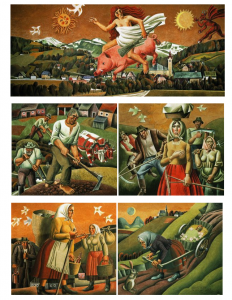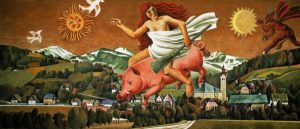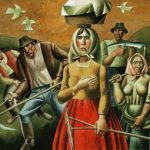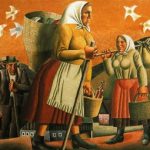When pupils, personnel, parents or occasional visitors enter the school building they are greeted by a warm, dynamic hall. There is a fish pond by the stairs leading upwards to classrooms, a gym, offices … Everything seems so natural – this is our school, we are familiar with it. But – are we really?
The above question comes up especially when we meet people who come to our school for the first time – pupils and teachers come here to various competitions, other visitors to attend meetings, conferences, concerts, shows … The stairs are usually not the first thing they notice, something stops them. But what? The unique and giant globe? The portraits of significant compatriots from Poljane and its surroundings? Colourful fish, humming water? Many questions spring up: who is the author of the globe, how long has the fish pond been here, what are the Poljane artists and scientists famous for …
When all the questions are answered there is still something unexpressed, earthly, rough and gentle. Something that embraces and defines the whole space, something that follows you up the stairs and through the school corridors.
Nature, people, country life, soil, cultivation, former times, work – everything is represented by five mighty frescoes which cannot leave any visitor indifferent.
The upper fresco shows the centre of the old Poljane village with a magnificent baroque church and houses under Tabor built in typical rustic architecture. Ive Šubic was convinced that Poljane people, though they seemed to be hard outwardly, had warm hearts. That was why he included the Sun and the Moon in this fresco – as symbols of light and hope. Agata, the heroine of The Chronicle of Visoko (Visoška kronika), a historical novel by Ivan Tavčar, is placed between the Sun and the Moon, riding a pig, representing duality, ambivalence of good and evil, of nature and spirit and of indivisible truth.
Under this big fresco there are four smaller ones, showing country life sights; the lyrical scene of Luca with her dead child from Ivan Tavčar’s story Flowers in the Fall (Cvetje v jeseni) can be identified in the lower fresco on the right.












